Written By Dr. Prashant Phirangi
Header Image Credits: Somnath Hore/ Kiran Nadar Museum of Art
.
.
Introduction to Relief Printmaking
Relief print is a mirror (reversed) image of the one cut on the block. Some of the most common examples of the relief printing are rubber stamps and textiles printed with wood blocks. In India, until 1960 letterpress machines that used relief process printed nearly all books, magazines and newspapers. First printing press was imported during Aurangzeb’s rule by a Gujarati businessman named Bhimji Parikh at Surat. Before advent of the process of making photomechanical metal blocks, hands engraved wood blocks were used for letterpress printing machines. In relief process the artist uses a piece of wood plank or any other similar material that has a flat surface and draws an image on it. Parts of the image that is to be white (or the colour of paper to be used for printing) are gouged out from its original surface so that the image stands out as a relief. When ink of any colour is applied on it, only the uncut parts of the surface receive it. As the necessary pressure is applied when the wood block (matrix) is brought in contact with a paper, the inked image is transferred onto it. Prints made with relief process, usually have bold and sharp black and white or distinct tonal areas. However, instead of a horizontally cut wood plank, vertical cross section cut from fine-grained wood are used for finer details. An image made this way is called Wood Engraving. The tools used for this are also different. Apart from the texture of the wood, relief prints would also show the character of tools used for cutting and the manner in which artists has used them. Each artist has a personal way of creating the image and handling the tools. Wood engraved blocks were used for publishing and such industrial printing until photo engraving took over. Illustrations for storybooks, textbooks, adverts etc. were also printed from such hand engraved wood blocks.
.
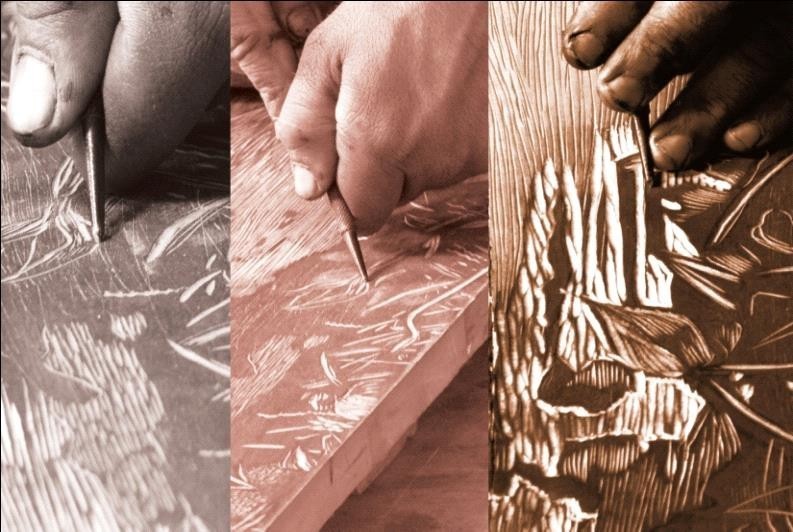
The Santiniketan Influence
“Nandalal Bose had introduced Graphic Art to Kala-Bhavana curriculam.from 1920-30 he experimented with the medium and new spontaneous language in printmaking. Concise, simple, and uncluttered, and did not attempt to translate an inherently occidental medium and style of imagery into a traditional oriental format. Significant among these works are reliefs such as Bapuji, and later prints of domestic pets and poverty humanity. Later body of work, not only is political consciousness, affinity with his subject, his enormous technical dexterity and his vast range of expression worth mention, but equally, if not more commendable is their evolution into a comprehensive aesthetic whole. He is not only for establishing new limits in graphic imagery, but also for spreading a graphic art movement in santiniketan.(Sengupta P.-2014).
.
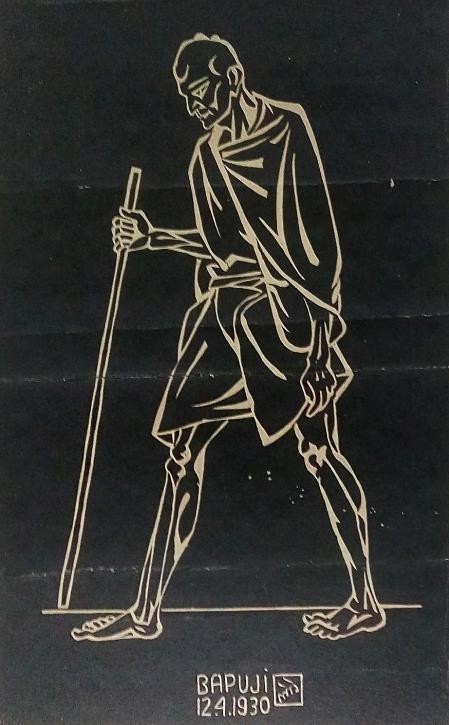
Romendra Nath Chakrabarty and Haren Das are perhaps the only Indian artists who have used wood engraving medium for their personal work.
.
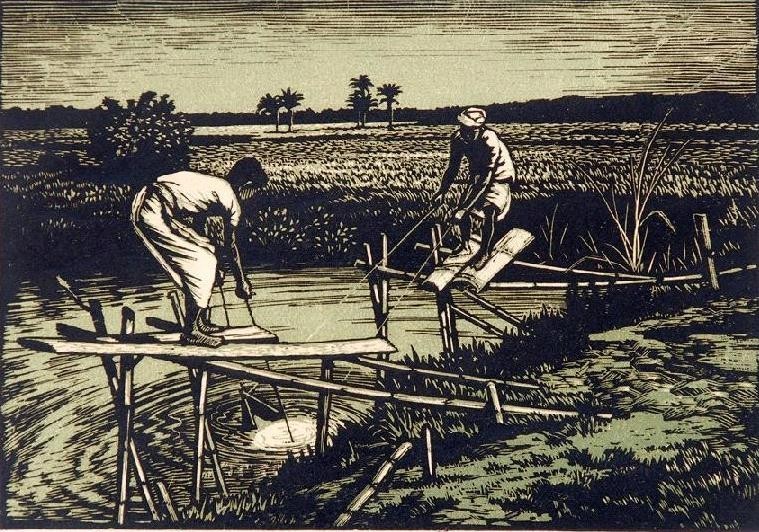
Techniques and Materials
“Those who work in woodcut normally apply oily ink on the matrix with a rubber roller. But traditional Japanese printers applied thin and delicate washes of water-colour with brush. So, their prints had a very different appearance and subtle tonal nuances. Woodcut (also known as Xylography), Linocut and Wood Engraving are the more exploited forms of relief printing. These and similar nomenclatures are often used for the prints as well as processes used to make them. Nowadays some artists are using plastics or similar synthetic materials and ply-woods for making larger size prints.
.

Printmaking in Colonial and Postcolonial India
Reproductions of Kalighat paintings were sold in the form of inexpensive wood cut prints in Bengal. But Nandlal Bose and Chitto Prasad are two of the Indian artists who had adopted this method for their personal expressions. During 1970s and 80s, Zarina Hashmi and Shanti Dave have used wood cut quite innovatively.(Bhatt J.-1995-96).
.
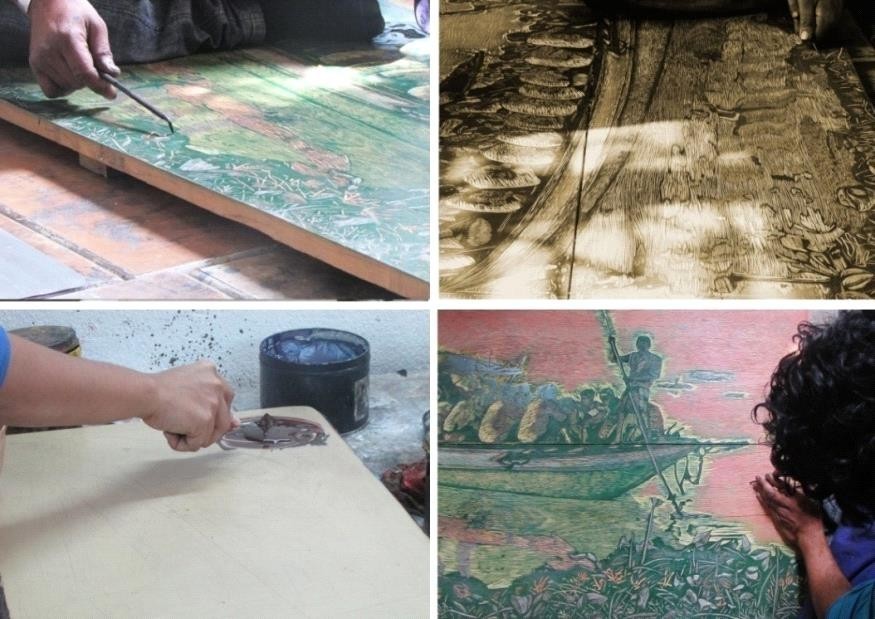
The history of printmaking is long and varied in India and dates back to the late 1700s. From the early years Kolkata remained the initiator in the aesthetic propagation of this form of visual art, and Kolkata has produced some of the finest works of art in India’s printmaking history. Throughout the 18th and the 19th century, India tried to adopt and assimilate printmaking as a part of its indigenous culture of art in an attempt to make it truly of its own.”
.
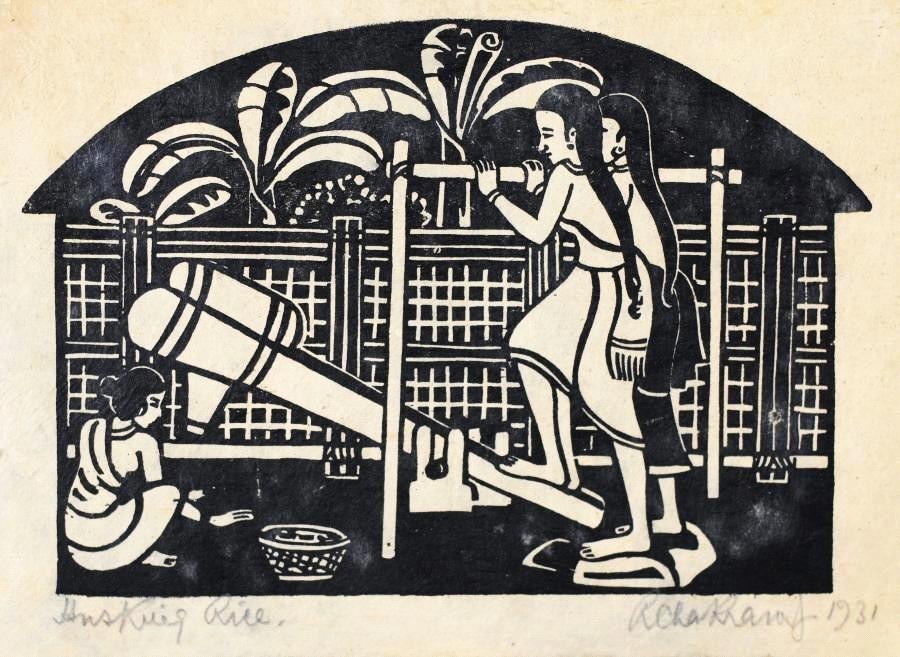
Equally sharing the time period by Ramendranath’s art was informed by a dilemma typical of the period. On the one hand those times were marked by the revivalist environment with a strong swadesi bent, and on the other, in some of the individual artists at least, one could sense an increasing yearning for a wider exploration of the arts in both terms of style and technique. When you look at Ramendranath’s entire oeuvre, he did in a sense reflect this duality. Quite a few works of his were done with obvious revivalist shades, and he never really gave up doing mythological and lyrical kinds of works.
The whole question of observation implied that art should respond to the everyday realities of contemporary life and its surroundings. Ramendranath’s growing interest in life and environment obliged him to take note of the minute details of tangible reality resulting in a fresh search for fitting visual forms capable of depicting things accordingly. Instead of adhering to a given idiom he created it from his own observations. Thus, in his innumerable prints, the local visual facts and subjects like Goalpara, a nearby village, the river Kopai, pastoral views of people tilling the lands, women in the fields, a group of ducks pedalling in a pond…even an ostensibly prosaic subject like variegated shadows under the trees…everything became worthy subjects for Ramendranath to draw.( Majumdar.S.N-2011)
.
Innovative Voices in Indian Printmaking
“Though from an entirely different genre and an artist lost to the politics of partition, Zarina Hashmi, like Hore emerged early on as one of the few printmakers of Indian Origin. Displaced by the partition of the sub-continent, her politics and her art are shaped by the reality of loss and imposed borders that she struggled with to date.
As a nomad traveller, Zarina has long been a maker of maps and an indicator of borders. These maps both personally and politically significant are rendered with restraint, almost like grids in a form of side wall by Sufi thought, and geometrical shapes which control whole idea of the concept. The concept and the medium had interrelated and shaping into the form of visual perspective in the contemporary way of approach within the periphery.
.
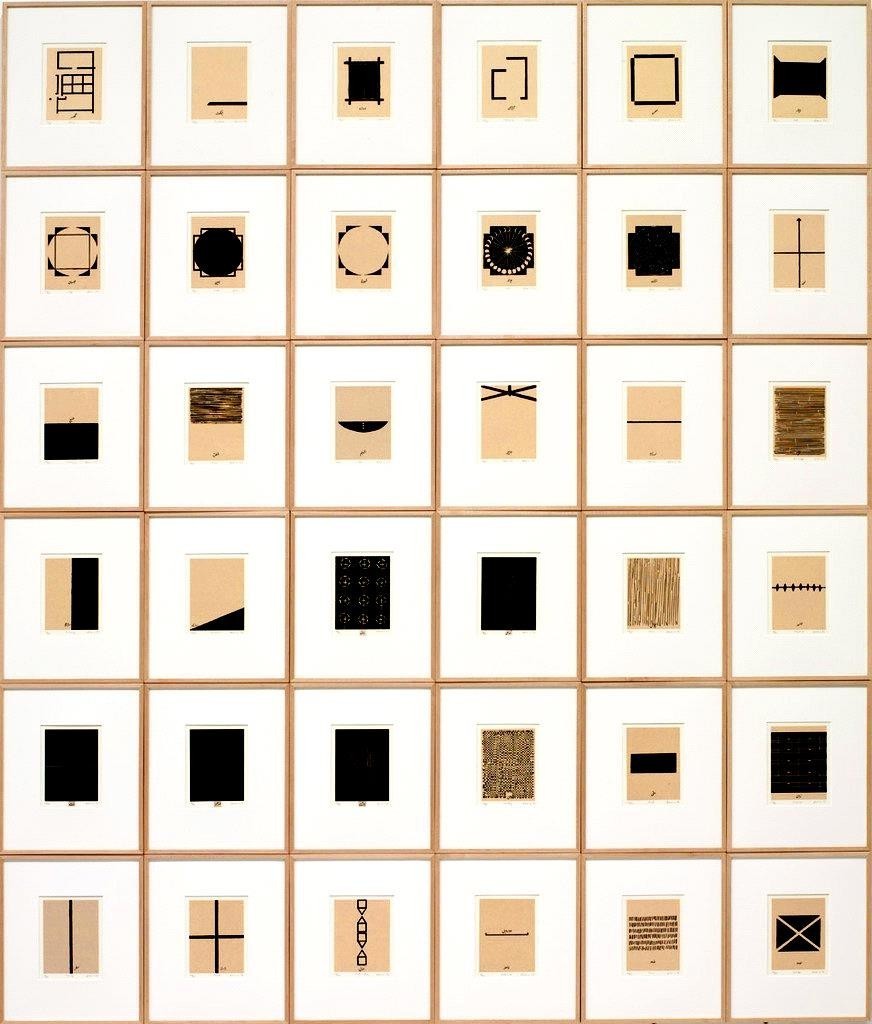
“Later stage of 80’s developing hard-hitting, monochromatic visual vocabulary, largely in the medium of woodcut.Suranjan Basu’s Politically and aesthetically within the frame of borderless and counter less edges of wood plank gave the outer part as shaping into the work of art as well in the creation in eastern region of India. He used the relief printmaking medium with great passion and flourish, sculpting the woodblock to maximum effect. The concept of political background with the expressionistic approach gave the pictorials effect, direct counter, and bold out lines gave the aggressive visuals to the perceivers.(Sengupta Paula-2012).
.
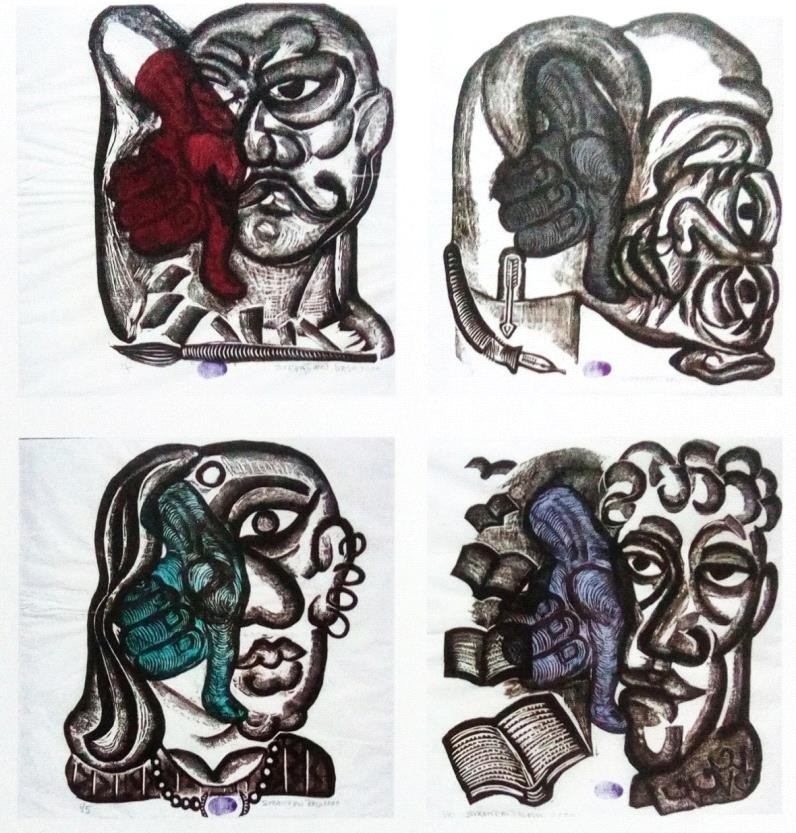
“Ideologically to the realistic, and monochromatic in presentation made the Walter D’souza works, evident of mirrors of grim. Black humour, Acquiring dual connections in series such as the great Indian rope trick. This legendary trick becomes synonymous with the wheeling and dealings that are the common place in the sub continent a sort of umbilical cord that indelibly binds every link in the chain to an inherently faulty system.
His works were filled with the typically generate the anxieties in these socially and politically aware of an artist, and the suffering of expression seen in his work of art. (Sengupta P.-2012).
.

Changing Attitudes Toward Medium and Practice
Changes in the attitude and selection of mediums gave rise to a new ways of thinking in printmakers. Transformative ideas/vision to translate the subject into something of their own, the dialogue between processes or in the techniques. And perceptions both gave the perspective sense to an artist, to respond to their medium related to their ideas and exploring through figures, lines, forms out of a process had changed the entire creation into next level. The influence of perceived reality and constant information by the medium with related to concept.
Some of the artist who works has always has inbuilt the indigenous essence. Whatever comes to their mind just executing to their creation using new tool and were artist, who really wanted to encourage the new medium, new techniques to explore as his part of expression. What the primitive people did on cave in the context to say about their feelings, expressions and excitement of new exploration of nature, they just drawn on the walls using surrounding materials.
Each of these artists has a valid but different reason for choosing different medium according to their concept. They may go for traditional methods or other mediums. After working with woodcut or wood engraving had their own charm one can deny they were laborious and had limiting also. They have their own visual aspects. Some of the artists want to create their own image-making beyond the limitations of the traditional methods.
In this way the traditional process Xylography has been gradually changing its attitude relating to artists urge not just because of the lack of availability of the materials.
.
About the Author
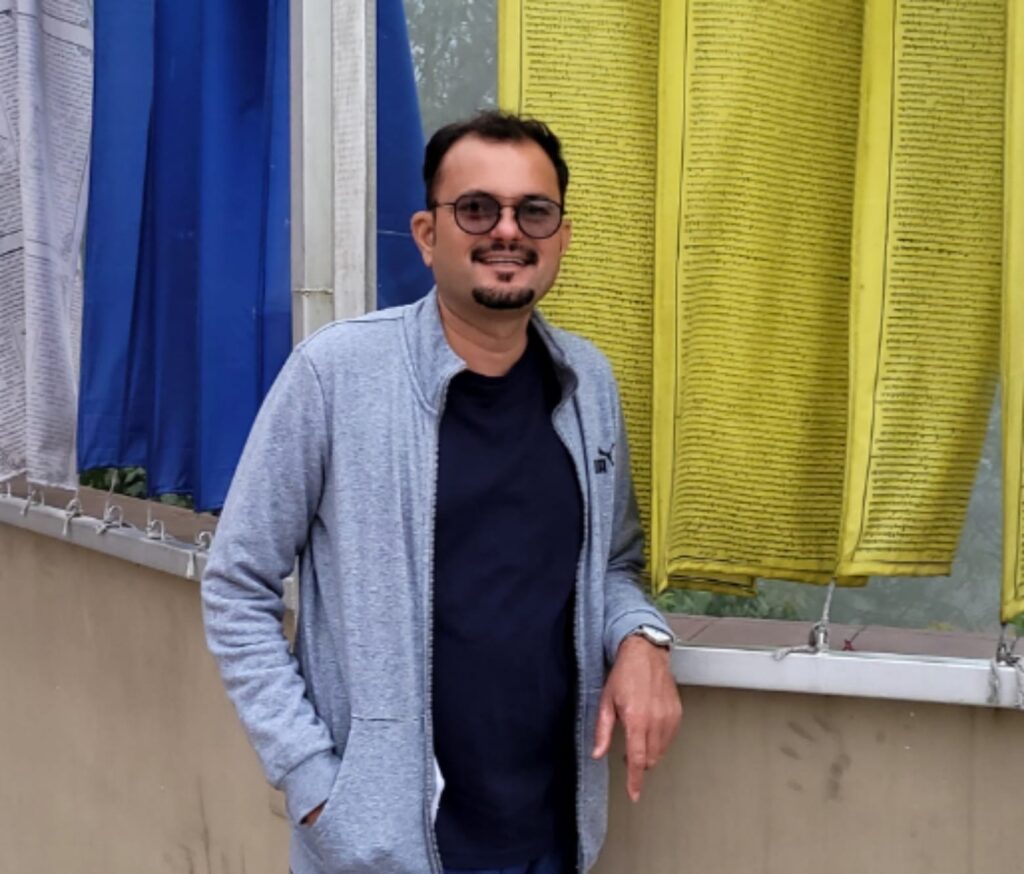
Dr. Prashant Phirangi holds a Bachelor’s degree in Painting from Gulbarga University, Karnataka, and a Master’s and PhD in Graphic Art (Printmaking) from Visva-Bharati University, Santiniketan, where he currently serves as Assistant Professor in the Department of Graphic Art. Over the years, he has developed a non-conventional artistic vocabulary supported by process-driven experimentation. He has conducted numerous national and international workshops, lectures, and seminars on non-toxic and alternative printmaking methods such as polyester plate lithography, cyanotype, gum dichromate, electrolysis, anthotype, and photosynthesis. His research has been published in peer-reviewed and UGC-listed journals.
Prashant’s printmaking practice reflects his cultural and social concerns, often presented as concept-driven series. He prioritizes ideas over medium, viewing image-making as a process of transformation. His work engages with urban complexities, exploring shifting socio-political and cultural realities through a thoughtful, research-based approach.
.
.
Footnote / Reference:
· Bhatt Jyoti, (1995-96)“Printmaking and Photography”; exhibition of prints; Indian Printmaker’s Guild;; volume III; New Delhi
· Sengupta Paula & Camilla H.Chaudhary (2014), “Trajectories: 19th -21st Century Printmaking from India and Pakistan” -pp-14.
Soumik Nandy Majumdar ,( Aug’2011)“Ramendranath Chakravorty Pioneer in modern Indian printmaking”,Art etc,news&views,vol.3/no.12,Kolkata
· Sengupta Paula, (2012), The Printed Picture – four Centuries of Indian Printmaking , Volume I & II ,DAG- Delhi Art Gallery; New Delhi
List of Plates/Images:
· Image-[1] and Image-[5]– by author
· Image-[2]-Nandan Museum –kala bhavana,Santiniketan
· Image-[3] –Haren Das book
· Image-[4], Image-[6] and Image-[7] various books
· Image-[8]- image courtesy by Rati basu· Image-[9] – courtesy by Author’s collection
.
.
This article was originally published in ‘Current Journal’ (Jan-Mar 2018), originally edited by, Dr. Rajeev Kumar Srivastava, and editor in chief, Prof. J. N. Singh. Modifications to the content have been made with the express permission of the author.
